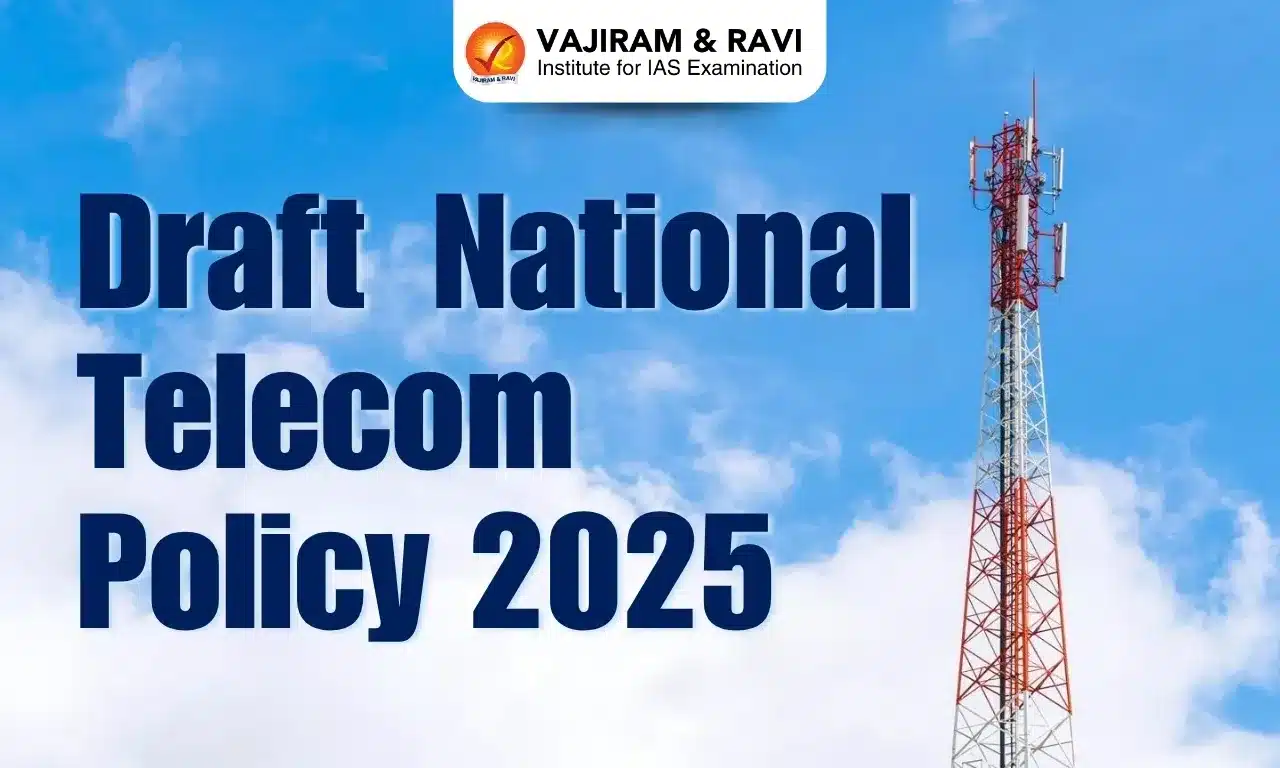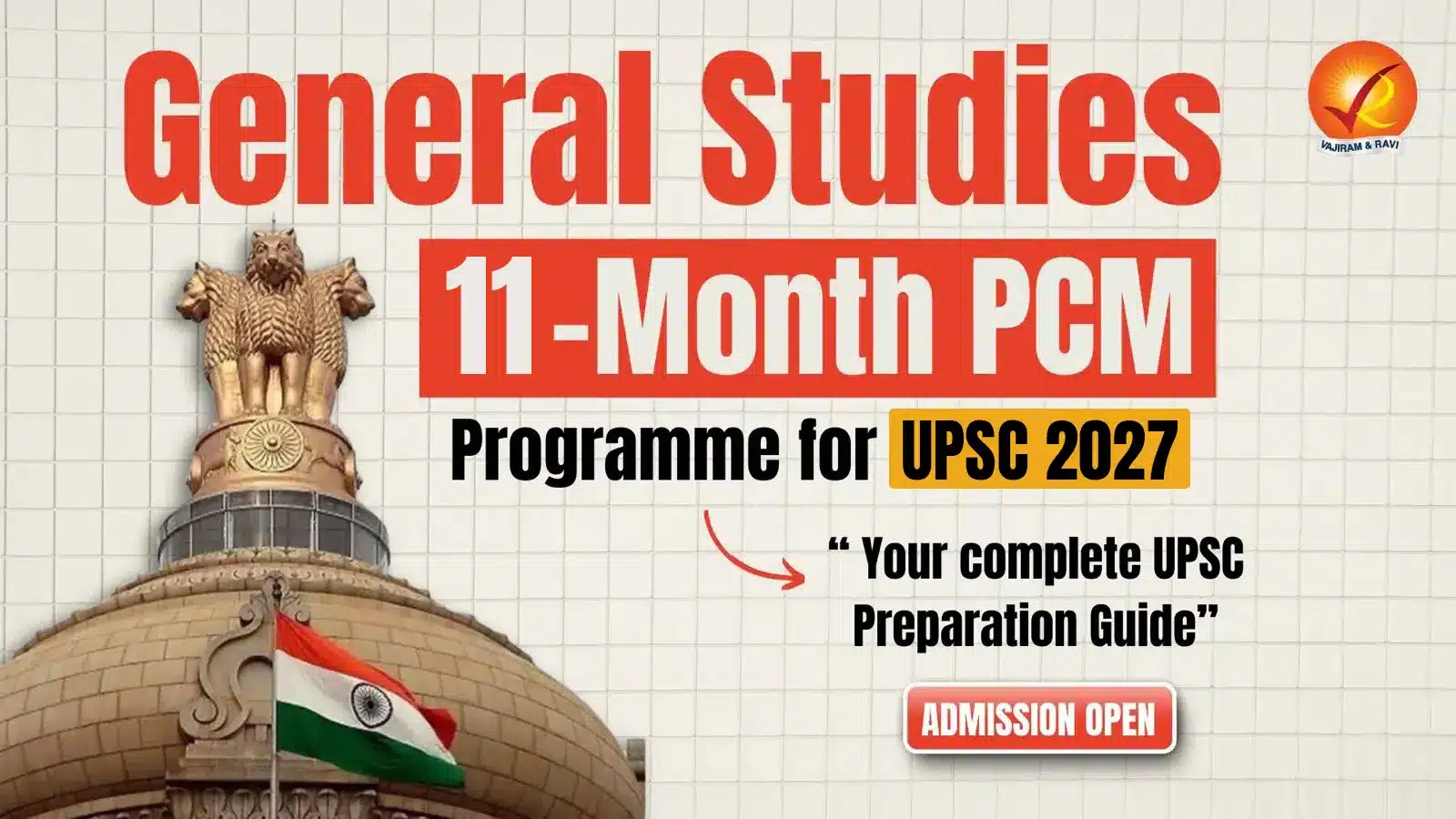Draft National Telecom Policy 2025 Latest News
- The Government of India, through the Department of Telecommunications (DoT), has released the Draft National Telecom Policy 2025 for public comment, seven years after the 2018 National Digital Communications Policy (NDCP).
- The draft outlines a strategic vision to transform India into a telecom product nation, focusing on connectivity, cybersecurity, indigenous manufacturing, sustainability, and employment generation.
Vision Statement of the 2025 Policy
To create a “telecom product nation” driven by innovation and ensure universal, meaningful, secure, and sustainable connectivity for all citizens.
Key Focus Areas and Policy Highlights of the 2025 Policy
- Universal and meaningful connectivity:
- 5G coverage: Target to cover 90% of population with 5G by 2030.
- 4G coverage: Achieve 100% 4G coverage nationwide.
- Fiber-connected towers: Increase from 46% to 80% to improve reliability and speed.
- Wi-Fi hotspots: 1 million new hotspots to be established (revised target from 10 million in 2018).
- Satellite internet: Promoting satellite-based connectivity in remote areas.
- Telecom sector employment and skilling:
- Job creation: Create 10 lakh new jobs in the telecom sector.
- Upskilling: Reskill another 10 lakh existing workers.
- Strengthening domestic telecom ecosystem:
- Domestic manufacturing: Aim for 150% increase in domestic telecom manufacturing by 2030.
- Telecom manufacturing zone (TMZ): Establish dedicated zones with integrated infrastructure.
- R&D promotion: Support local R&D and incentivize global standardization participation, including in 6G technologies.
- CSR recognition: Telecom R&D and standardization efforts may be included under Corporate Social Responsibility (CSR).
- Cybersecurity and Artificial Intelligence (AI):
- AI for cybersecurity:
- Defensive use: AI-enabled systems to detect and prevent cyberattacks.
- Offensive threats: Address risks from generative AI-based attacks.
- AI in governance: Use AI chatbots for consumer complaint resolution via a unified grievance portal.
- Cross-border security: Enhance monitoring of border telecom signals and foreign satellites to reduce interference.
- AI for cybersecurity:
- Green telecom and circular economy:
- Carbon footprint: Reduce telecom sector’s emissions by 30%.
- Material recycling: Promote circular economy by recycling telecom hardware and equipment.
- Technological advancements:
- Quantum-secure communications: Focus on quantum encryption technologies for secure communication.
- Lawful interception: Removed from current policy draft, indicating a shift towards privacy-centric security mechanisms.
- Mobile number validation: Support for services enabling mobile identity verification; draft regulations already released.
Comparison Between 2018 NDCP and Draft 2025 Telecom Policy
- Terminology:
- 2018 NDCP: Named as National Digital Communications Policy (NDCP).
- 2025 Draft Policy: Termed as National Telecom Policy with a more sector-specific focus.
- Employment target:
- 2018 NDCP: Aimed to create 40 lakh jobs in the broader digital communications sector.
- 2025 Draft Policy: Targets 10 lakh new jobs specifically in the telecom sector.
- Wi-Fi Hotspot target:
- 2018 NDCP: Targeted 10 million Wi-Fi hotspots across the country.
- 2025 Draft Policy: Scaled down to 1 million hotspots, with a more realistic and focused approach.
- Focus on domestic manufacturing:
- 2018 NDCP: Had a moderate emphasis on promoting domestic manufacturing.
- 2025 Draft Policy: Aims for a 150% increase in domestic manufacturing by 2030, including establishment of Telecom Manufacturing Zones (TMZs).
- Use of AI and cybersecurity:
- 2018 NDCP: Limited mention of AI in telecom operations.
- 2025 Draft Policy: Provides a comprehensive strategy for using AI in cybersecurity, complaint redressal, and network security.
- Environmental sustainability:
- 2018 NDCP: Sustainability measures were not clearly quantified.
- 2025 Draft Policy: Aims for a 30% reduction in the sector’s carbon footprint and promotes circular economy practices.
Conclusion
- With its forward-looking emphasis on indigenous innovation, secure communication, and sustainable growth, the Draft National Telecom Policy 2025 positions India to become a global leader in next-generation telecom technologies like 6G and quantum communications.
- If implemented effectively, it could serve as the backbone of India’s digital sovereignty and inclusive economic transformation in the decades to come.
Source: TH
Last updated on January, 2026
→ Check out the latest UPSC Syllabus 2026 here.
→ Join Vajiram & Ravi’s Interview Guidance Programme for expert help to crack your final UPSC stage.
→ UPSC Mains Result 2025 is now out.
→ UPSC Notification 2026 is scheduled to be released on January 14, 2026.
→ UPSC Calendar 2026 has been released.
→ UPSC Prelims 2026 will be conducted on 24th May, 2026 & UPSC Mains 2026 will be conducted on 21st August 2026.
→ The UPSC Selection Process is of 3 stages-Prelims, Mains and Interview.
→ Prepare effectively with Vajiram & Ravi’s UPSC Prelims Test Series 2026 featuring full-length mock tests, detailed solutions, and performance analysis.
→ Enroll in Vajiram & Ravi’s UPSC Mains Test Series 2026 for structured answer writing practice, expert evaluation, and exam-oriented feedback.
→ Join Vajiram & Ravi’s Best UPSC Mentorship Program for personalized guidance, strategy planning, and one-to-one support from experienced mentors.
→ UPSC Result 2024 is released with latest UPSC Marksheet 2024. Check Now!
→ UPSC Toppers List 2024 is released now. Shakti Dubey is UPSC AIR 1 2024 Topper.
→ Also check Best UPSC Coaching in India
Draft National Telecom Policy 2025
Q1. How will the draft National Telecom Policy 2025 make India a telecom product nation?+
Q2. What is the role of AI in telecom cybersecurity?+
Q3. How does 2025 policy differ from 2018 in jobs and connectivity?+
Q4. What are the sustainability goals in the draft policy?+
Q5. How will the policy enhance telecom security?+

















